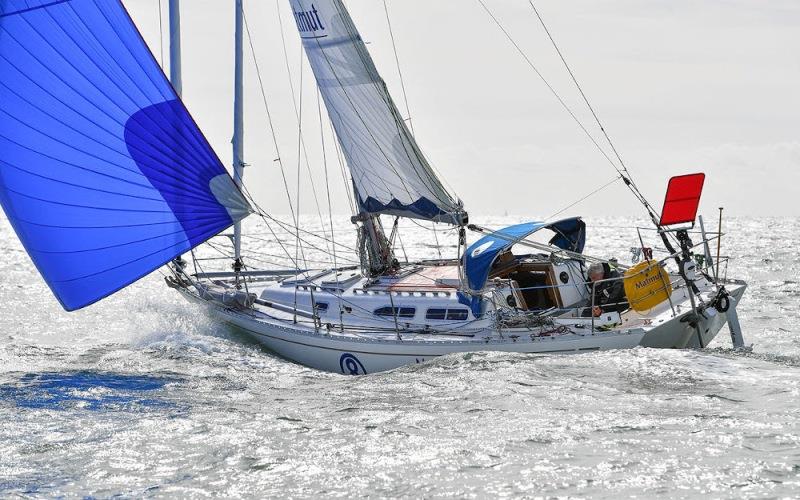
Windvane pilots vs electric autopilots: all you need to know
by Global Solo Challenge 8 Jun 2021 07:32 PDT

Hydrovane - Jean Luc Van Den Heede © Christophe Favreau / GGR / PPL
Windvane have made the history of single-handed offshore sailing, electric pilots have evolved and are now the only system on racing boats.
A boat's autopilot is its most expensive electronic component. So it is important to know it well and know how to use it to get the best out of it. However, autopilots have not always been electric, their evolution has required years of refinement. At the dawn of ocean sailing there was nothing but windvane pilots. Being mechanical and not dependent on electricity, they have been the heart of offshore sailing for decades.
However, the windvane pilot has limitations that do not make it ideal in all circumstances. The world of races has therefore given impetus to the development of electric autopilots. At first they were very simple, but a modern autopilots are really very sophisticated. On modern racing boats, windvane pilots are no longer seen, however they still have a large market in the cruisers' world. In this article we try to understand its pros and cons and evolutions over the decades.
Mechanical windvane pilot and electric autopilot
Before electronics invaded our boats, there were only mechanical autopilots. A mechanical autopilot is called a windvane pilot. In English they are called windvanes or windpilots. Their story is very fascinating, before a commercial version was produced they were all self-built. At the first edition of the OSTAR in 1960 all competitors had one of their own engineering.
The windvane pilot
When Francis Chichester completed his first sailing circumnavigation in 1967 he became a hero. Sailing with a sextant and a windvane on the stern of Gipsy Moth IV he became a legend. The following year the Golden Globe started, the first non-stop round-the-world race. Robin Knox-Johnston became the first man to complete a non-stop sailing circumnavigation. Bernard Moitessier was also at the start and his photos with the sextant in hand made history. His boat was also equipped with a self-built system.
The principle of operation of the windvane pilot
The operation of a windvane pilot is more complex than you think. These systems too have evolved over time trying various solutions. There are effectively two methods, one that uses a servo-pendulum blade (e.g. Monitor) and one that drives a secondary boat rudder (e.g. Hydrovane). The sail, or blade, of the windvane rudder certainly cannot have the strength to steer a large boat of many tons and in such cases those pilots that use a secondary rudder need a twin pilot installation. On a servo-pendulum system the small oscillations of the blade are trasformed into a force sufficient to steer the boat but work best with tillers rather than wheels and their installation is not always possible.
To do this, the airblade is connected to a blade immersed in the water that looks like a rudder. However, it must be immediately clarified that this blade does not act as a rudder on servo-pendulum windpilots, it is so only on winvanes like the Hydrovane. On servo-pendulum systems, the blade is mounted on a vertical tube with a fulcrum point and can swing from left to right.
On a Hydrovane or auxiliary rudder system the rudder steers the boat and does not oscillate. On servo-pendulum systems what makes the blade swing is the airblade, causing it to rotate slightly, but this does not alter the course of the boat, as the pendulum is connected then to the boats rudder. On auxiliary rudder the same rotation turns the auxiliary rudder to steer the boat directly being independent of the boat's rudder. The airblade is adjusted to a certain angle to the wind and remains vertical in the absence of other forces.
When the wind instead of flowing along the axis of the blade hits it sideways, it knocks it down on one side. The airblade in the air has a counterweight, so even a little air is enough for this to happen.
Read the full article here...